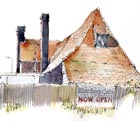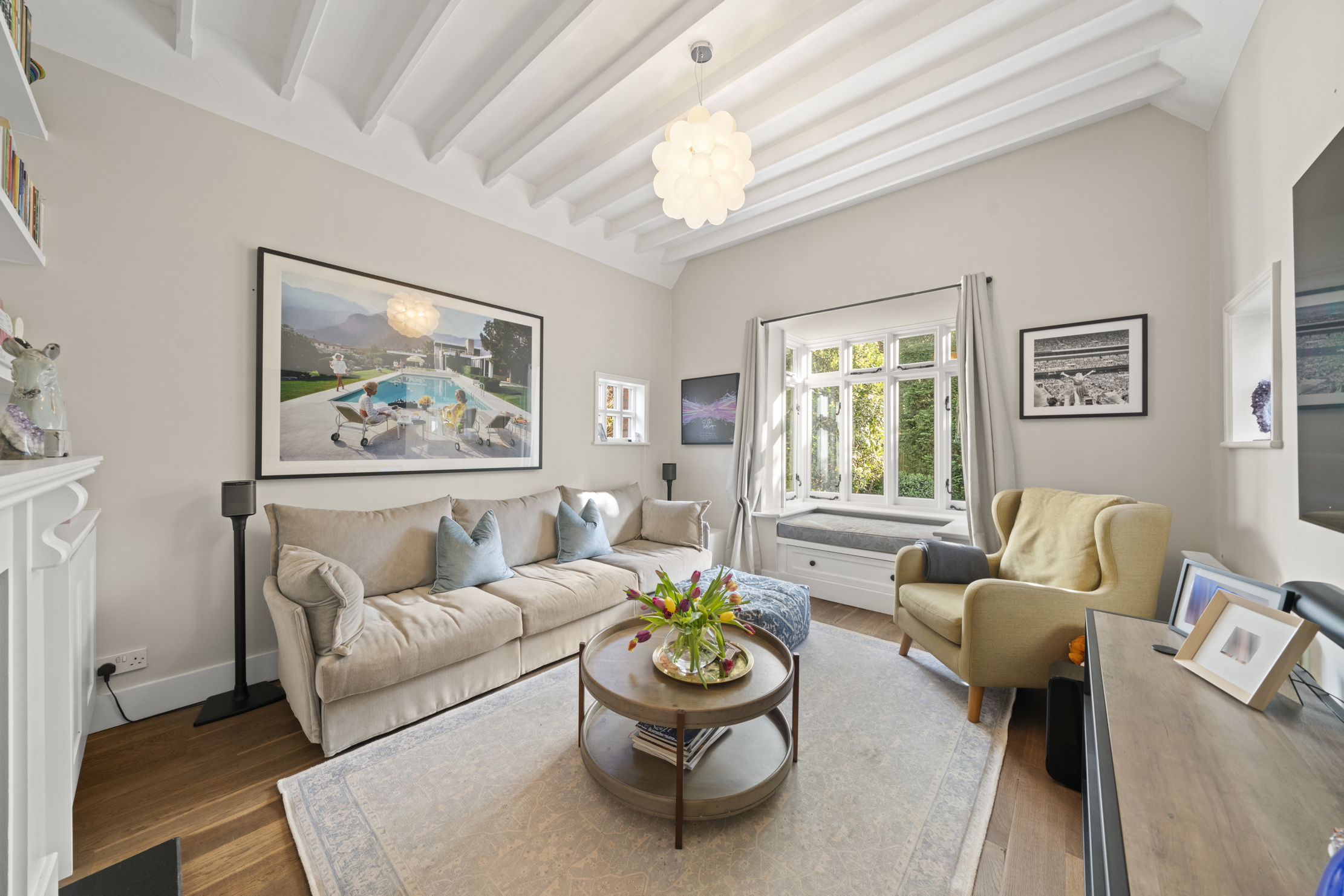Ptolemy Dean: Save this building
The proposed demolition of an historic coaching inn is an important example of the folly of the environmental grounds this type of decision is based on, says Ptolemy Dean


It's not every day that I feel moved to draw the view from a petrol filling station forecourt, but immediately next to the blandly (and inaccurately) named Tunbridge Wells Services on the A21 London to Hastings trunk road is the former Blue Boys Inn. It must have long been a welcome coaching stop on the long trek up from the south coast and still serves this purpose as the Blue Boys Café.
Rundown it may be, but its steeply pitched roof of ancient handmade tiles shown in the view above almost certainly conceals a building of the 16th or 17th century and the chequer-brick range behind suggests a quality construction of Georgian origin. The flat-roofed and white-painted annexe behind the fence is an easily removable addition from the ‘Cortina and Capri' era of 1970s architecture. It has, no doubt, discouraged those who ought to have looked harder at having this building listed.
Not shown in this drawing is the front of the building. This has symmetrically placed sash windows (now the ubiquitous uPVC) and a large 19th-century roof parapet panel with the legend ‘Blue Boys' above the front door. In a further effort to catch passing trade in the 1930s, two full-size cast-concrete figures were added in front of the building-the ‘blue boy' himself, who was dressed as a chef, and a cheery waitress holding a tray.
Sadly, a Hastings-bound juggernaut hit the chef some years ago and, for a long time, only his feet and ankles could be seen poking up above the grass verge. The cheerful maiden survived him for a while in her rather sad uniform of peeling paint, but, only a few weeks ago, she also disappeared. Is the fate of these figures a harbinger of the building they once advertised?
It is proposed to replace entirely all of this with a new flat-roofed, two-storey box of a building to accommodate a McDonald's restaurant with its attendant drive-through. We know what the new building will look like as one just like it has already been built and photographed in some other no-man's-land location elsewhere. There are also thousands of similar creations in America and beyond; a case of rolling out a tried-and-tested formula that maximises efficiencies and reduces cost. In effect, an architectural Big Mac.
Convenient and popular though this may well be for the operator, the new building will lack the charm and presence of the Blue Boys Inn and erase something that has gently evolved and adapted through the years and has occupied this site for probably in excess of 400 years. The supporting document for the proposals quotes the local planning officer's apparent enthusiasm for replacement as the new building will have ‘the benefit of reducing the height and massing through the use of a flat roof', rather as if the beautiful swathe of handmade Kent peg tiles was an inappropriate intrusion into the otherwise utilitarian setting of the neighbouring petrol filling station.
More seriously concerning and with alarming national implications are the arguments to support redevelopment on ‘environmental' grounds. These include: ‘The flat roof could also allow the use of a green roof, which would be beneficial for biodiversity and surface water drainage', ‘A native hedgerow should be included around the car park and along the A21 frontage with sufficient space to allow it to flourish' and ‘Opportunities for planting individual trees should be explored'.
Sign up for the Country Life Newsletter
Exquisite houses, the beauty of Nature, and how to get the most from your life, straight to your inbox.
Elsewhere, we are told that people will be encouraged to come here by bicycle and bus, so as to discourage people from ‘reliance on private cars'. Is it really reasonable to expect users of the A21 to enjoy this new drive-through facility from an infrequent public bus or bicycle? It seems astonishing that, after all we've read and heard about the importance of meaningful conservation and reuse of resources, the pulling-down of a good building such as this should be argued on such seemingly superficial environmental grounds.
With some degree of care and ingenuity, there is no reason why a robust building such as the Blue Boys Inn could not be utilised and reformed into a new and modern restaurant that is fit for purpose, saving the resources already embodied in the existing building.
Of course, this will require a greater degree of effort, commitment and thought than the standardised low-cost approach on offer. If such relatively trivial Green attributes are allowed to succeed as justification for the loss of a building such as this, then how can any of our older, unlisted buildings survive?
* Subscribe to Country Life and save
* Follow Country Life magazine on Twitter
Country Life is unlike any other magazine: the only glossy weekly on the newsstand and the only magazine that has been guest-edited by HRH The King not once, but twice. It is a celebration of modern rural life and all its diverse joys and pleasures — that was first published in Queen Victoria's Diamond Jubilee year. Our eclectic mixture of witty and informative content — from the most up-to-date property news and commentary and a coveted glimpse inside some of the UK's best houses and gardens, to gardening, the arts and interior design, written by experts in their field — still cannot be found in print or online, anywhere else.
-
 ‘It had the air of an ex-rental, and that’s putting it politely’: How an antique dealer transformed a run-down Georgian house in Chatham Dockyards
‘It had the air of an ex-rental, and that’s putting it politely’: How an antique dealer transformed a run-down Georgian house in Chatham DockyardsAn antique dealer with an eye for colour has rescued an 18th-century house from years of neglect with the help of the team at Mylands.
By Arabella Youens
-
 A home cinema, tasteful interiors and 65 acres of private parkland hidden in an unassuming lodge in Kent
A home cinema, tasteful interiors and 65 acres of private parkland hidden in an unassuming lodge in KentNorth Lodge near Tonbridge may seem relatively simple, but there is a lot more than what meets the eye.
By James Fisher